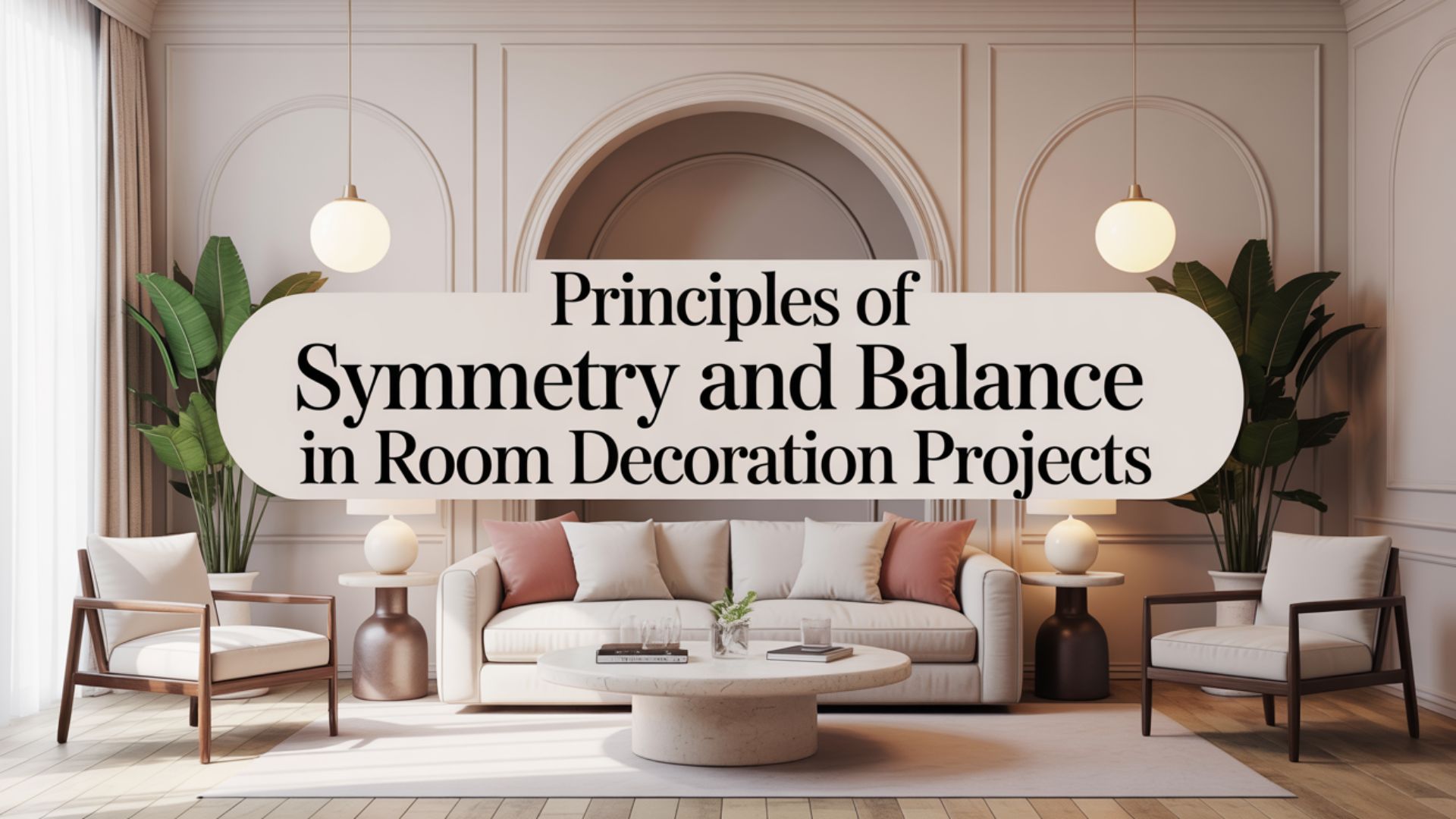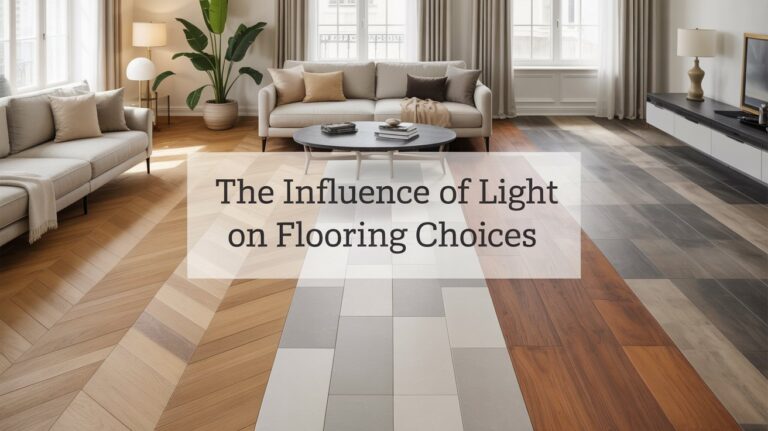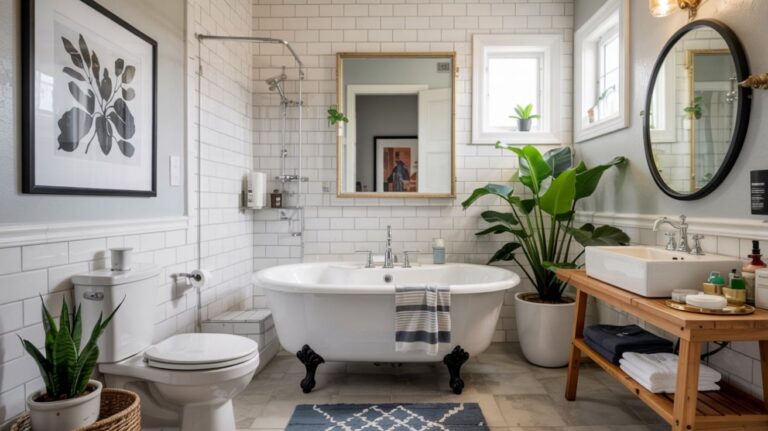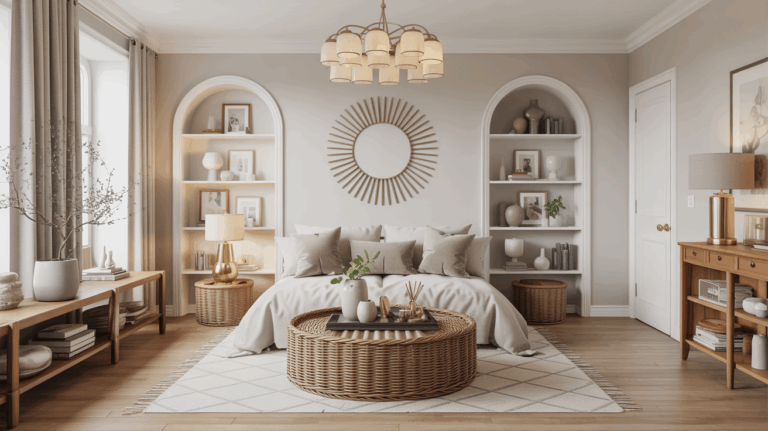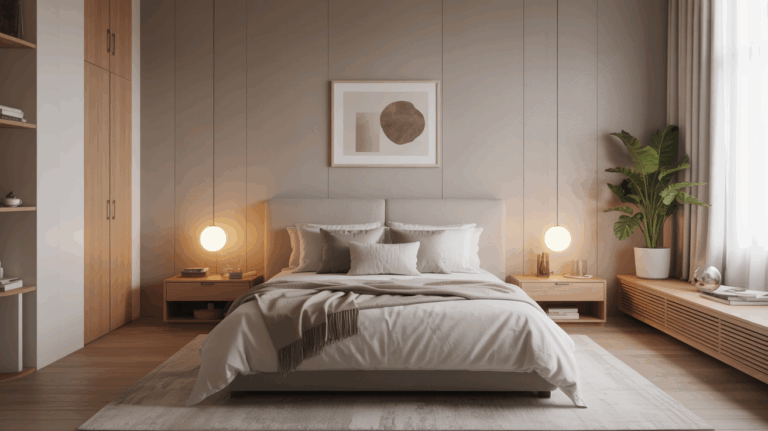Principles of Symmetry and Balance in Room Decoration Projects
I have been, or can be if you click on a link and make a purchase, compensated via a cash payment, gift, or something else of value for writing this post. As an Amazon Associate, I earn from qualifying purchases. Please read my full Affiliate Disclosure for more information.
Principles of symmetry and balance in room decoration start with a calm centerline you reference for everything—from art to furniture. You create visual balance by pairing seating and mirroring layouts, offsetting large pieces with bold accents, and aligning edges with architectural cues. Color, texture, and scale weave harmony, while layered lighting defines rhythm and depth. Repeated motifs and thoughtful proportions guide the eye, forming a cohesive flow. If you keep exploring, you’ll uncover more ways to refine this balance.
Key Takeaways
- Symmetry means balanced arrangement around a centerline, guiding visual order with proportional spacing of art, furniture, and architecture.
- Pair seating and match consoles or lamps to create mirrored rhythm and cohesive alignment.
- Use color, texture, and scale to maintain harmonious transitions and proportion across the room.
- Layer lighting (ambient, task, accent) to define rhythm, depth, and focal emphasis.
- Repetition of patterns, motifs, and shapes builds visual rhythm while varying density for unity.
Understanding the Foundations of Symmetry in Interior Design
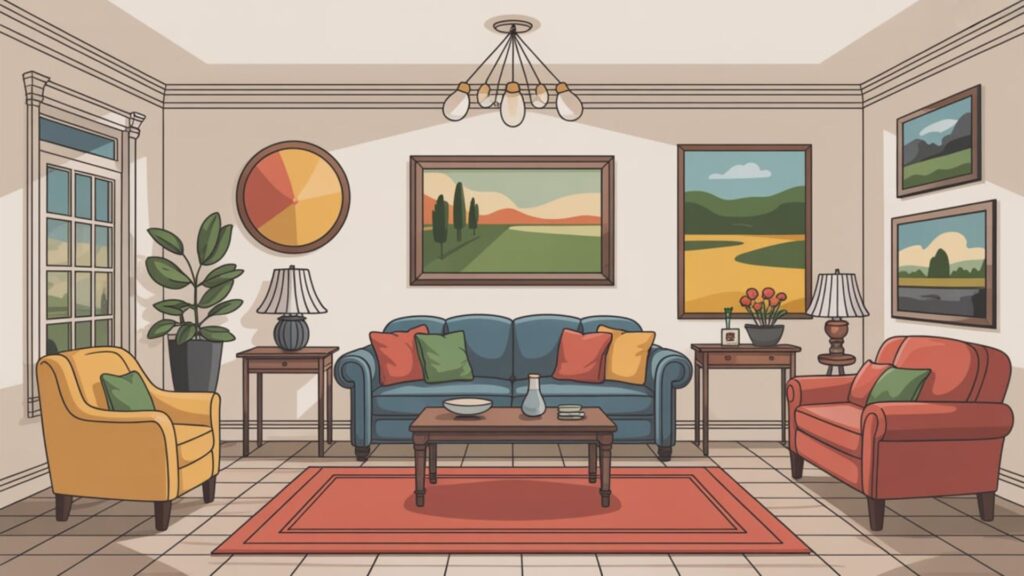
Symmetry in interior design isn’t about mirror-finished perfection; it’s about balance that feels effortless. You explore symmetry by recognizing how elements relate to an imagined centerline, not by forcing exact copies. Mirror placement matters, but it’s strategic, guiding how light travels and how you perceive space rather than simply filling gaps. Axis alignment helps you test visual order: align art, furniture edges, and architectural cues to a shared axis, creating cohesion. Embrace proportional relationships, such as equal spacing and size harmony, to craft calm rooms. When you practice this foundation, balance emerges with clarity and quiet sophistication.
Achieving Visual Balance Through Furniture Placement
You’ll start by pairing seating with intention, using Symmetry in Seating to create a calm, mirrored rhythm. Consider Weight Distribution Rules to keep each zone balanced, so a sofa and chairs feel visually anchored rather than toppled or crowded. As you place pieces, aim for careful contrast and even weight across the room to guide flow without shouting for attention.
Symmetry in Seating
How can seating arrangements instantly ground a room? You’ll shape balance by mirroring silhouettes, not duplicating them. Use mirror symmetry where two chairs face a sofa, or twin consoles bolt a focal point with identical lamps. When you deploy asymmetrical balance, offset a larger sofa with one bold chair and an accent rug; the weight shifts without chaos. Allow sightlines to breathe, aligning legs and cushions to echo lines from artwork or architectural features. Invite rhythm through repeating shapes, textures, and scale. With careful placement and intention, seating becomes the room’s calm, coherent center.
Weight Distribution Rules
Weight distribution isn’t about equally spreading furniture; it’s about guiding the eye with deliberate mass. You’ll balance rooms by considering object size, placement, and distance from anchors like fireplaces or windows, so nothing feels stray or off-kilter. Begin with a visual triangle: a heavy focal point and two supporting masses create visual equilibrium without crowding. Mix low, mid, and tall pieces to avoid monotony, and allow negative space to breathe. Align edges for cohesion, but offset accents to avoid rigidity. Reassess from different viewpoints, adjusting proportions until weight distribution feels natural, intentional, and deeply comfortable.
The Role of Color, Texture, and Scale in Harmonious Rooms
Color, texture, and scale are the three threads that weave a room into a cohesive whole: color provides mood, texture adds tactile interest, and scale guarantees everything feels proportionate. You’ll balance color harmony by aligning hues across furniture, textiles, and art, ensuring transition is seamless rather than jarring. Texture contrast matters: smooth surfaces with rough accents create depth without clutter. Scale guides placement, so highs and lows feel intentional, not random. You’ll test contrasts modestly, then expand, keeping rhythm steady. When done well, color, texture, and scale communicate harmony, clarity, and calm, inviting viewers to move through space with confident ease.
Lighting as a Catalyst for Symmetry and Rhythm
Lighting can be the backbone of symmetry and rhythm in a room, shaping how every element reads as part of a cohesive movement. You’ll use lighting to map balance, guiding attention with deliberate placement, brightness, and color temperature. Let ambient glow sketch soft edges on key features, creating harmony without harsh contrast. Shadow play then adds depth, defining silhouettes and reinforcing mirror-like pairs or repeated forms. As you layer sources—ceiling, wall, floor—you craft a readable rhythm, where progressions feel intentional and calm. The result is clarity, coherence, and a space that breathes with precise, inviting order.
Repeating Elements: Patterns, Objects, and Proportions
You’ll notice how repeating patterns guide your eye, creating rhythm that ties together shapes, tones, and space. By aligning proportions and placing elements with intention, balance emerges from repetition rather than force. This starts a dialogue about how consistent repetition becomes a unifying principle across your design.
Repeating Patterns, Proportions
Repeating patterns stitch order through space, turning disparate elements into a cohesive rhythm governed by proportion. You guide the eye by repeating motifs at deliberate intervals, creating predictable cadence without monotony. Aim for complementary scales: large focal motifs balanced by smaller echoes, so the room breathes rather than feels crowded. Use ornamental motifs to anchor a scheme, while decorative borders frame alignments and define zones. Proportion guarantees harmony between texture, color, and form, preventing chaos as patterns advance. Keep transitions seamless, varying density gradually. This approach moderates energy, invites flow, and reinforces unity across walls, fabrics, and furnishings.
Balanced Element Placement
How can you achieve harmony by balancing repeating elements—patterns, objects, and proportions—across a space? You can guide the eye with consistent rhythm: repeat motifs in varying scales, align edges, and place focal items off-center to create artistic asymmetry. Emphasize cadence in patterns, ensuring contrast and unity coexist. Use proportion to distribute weight: heavier pieces anchor corners or walls, lighter accents traverse opposite zones. Practice asymmetrical balance by pairing a dominant element with supporting ones that echo its shape or color. Balance becomes intentional rhythm, not rigidity, inviting calm, cohesive rooms through deliberate repetition and measured variety.
Focal Points and Anchor Pieces for a Cohesive Layout
Focal points act as the visual gravity for your layout, drawing the eye to the most important elements and guiding the viewer through the design with purpose. You create focal points by aligning objects, leveraging contrast, and using scale to signal importance. Anchor pieces stabilize the scene, anchoring your eye to a central narrative while supporting surrounding details. Pair a striking focal point with complementary anchor pieces to maintain balance and cohesion across rooms. Keep the hierarchy clear: dominant element, secondary supports, then accessories. This approach cultivates a cohesive, legible space where focal points and anchor pieces reinforce purpose.
Adapting Symmetry and Balance Across Different Space Types
Symmetry and balance aren’t one-size-fits-all; they bend with the space you’re shaping. Adapting them across space types means listening to constraints and opportunities, then aligning form with function. Your goal is cohesive transformation that respects flow, scale, and intent. Here are guiding steps:
- Assess the room’s proportions and traffic, adjusting balance to support movement.
- Consider lighting and material weight to refine symmetry without stifling energy.
- Weave cultural influences into focal strategies, honoring space transformation needs.
- Test configurations that honor both harmony and variety for a livable, expressive result.
Conclusion
You’ll find that symmetry and balance aren’t strict rules but flexible cues. When you align furniture with purpose, balance color and texture, and let light guide rhythm, spaces feel intentional rather than staged. Repetition anchors your design, focal pieces provide calm anchors, and thoughtful scale keeps everything relatable. Adapt these ideas to your room’s quirks, and you’ll create harmony that’s inviting, cohesive, and uniquely yours—where every detail supports a calm, confident flow.
